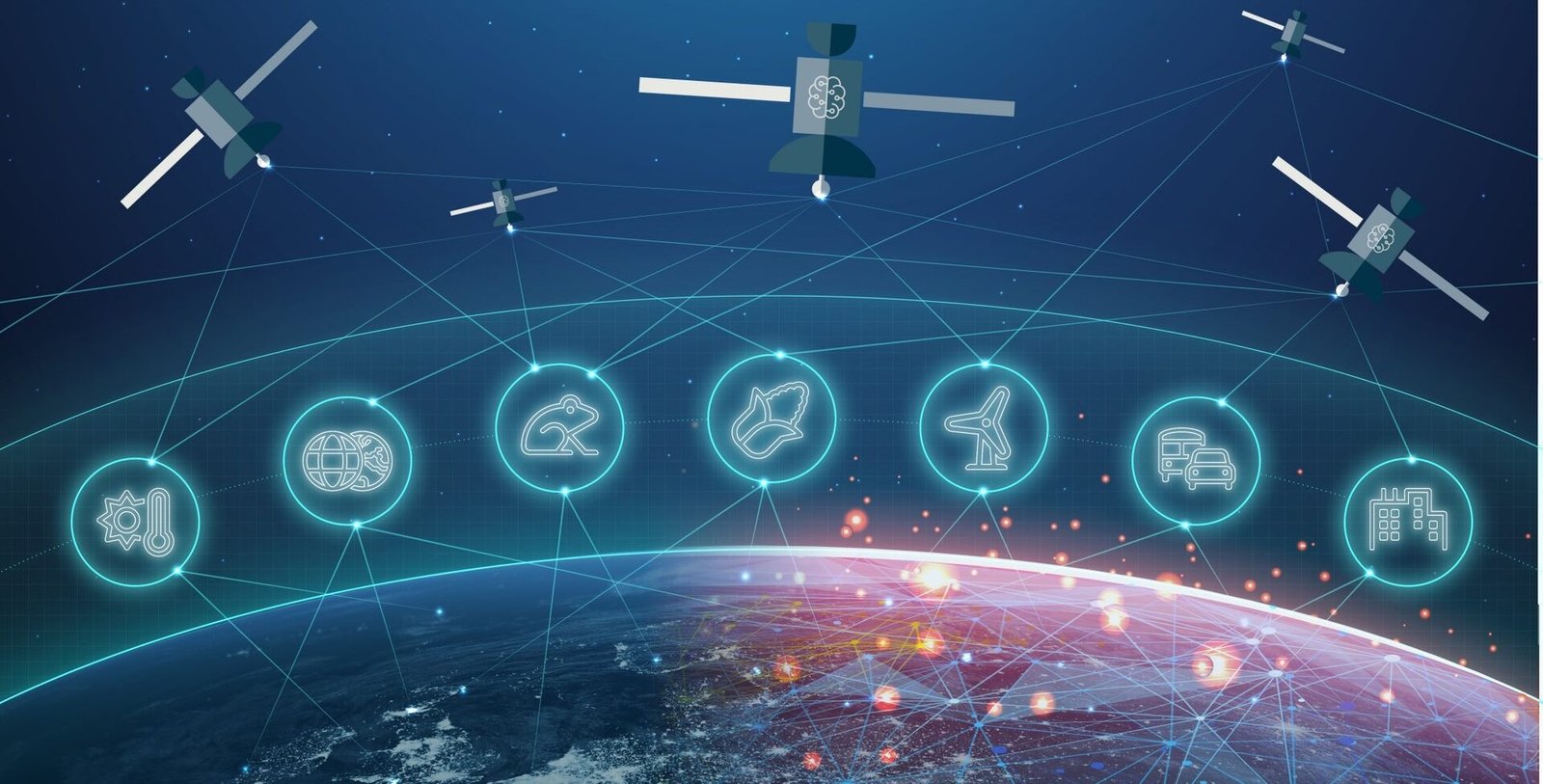What is the newest space technology? In this article, we’ll explore the newest advancements in space technology, from artificial intelligence to reusable rockets, and see how they are revolutionizing our understanding of the cosmos. So buckle up as we embark on this cosmic journey!
The Evolution of Space Technology
Space technology has come a long way since the early days of rocketry. Remember those grainy black-and-white images of the Apollo missions? Those were groundbreaking back then, but today’s technology makes them look like ancient relics. The rapid pace of technological advancement has led to significant milestones in space exploration, with each leap forward opening up new possibilities.

From launching the first artificial satellite, Sputnik 1, to landing the Curiosity rover on Mars, each achievement has been a stepping stone toward more ambitious endeavors. The evolution of space technology is a testament to human ingenuity and our desire to explore the unknown.
Revolutionary Satellites
Satellites have always been the workhorses of space exploration, providing valuable data for everything from weather forecasting to GPS navigation. But recent advancements in satellite technology have taken things to a whole new level. Enter miniaturized satellites like CubeSats and NanoSats – tiny powerhouses that pack a punch.
These compact satellites are revolutionizing the way we approach space missions. They are cost-effective, versatile, and can be launched in swarms to gather data from multiple points in space. Imagine a school of fish swimming through the ocean – that’s how these satellites explore the cosmos, offering a wealth of information that was previously out of reach.
The Role of Artificial Intelligence in Space

Artificial intelligence (AI) is no longer just a sci-fi fantasy – it’s now a crucial player in space exploration. AI applications in space missions have opened up new avenues for exploration and research, making it possible to accomplish tasks that were once deemed impossible.
From autonomous navigation systems that guide spacecraft to distant planets to AI-driven data analysis that uncovers hidden patterns in vast datasets, the benefits of AI in space exploration are immense. Imagine having a cosmic detective at your disposal, unraveling the mysteries of the universe with each line of code.
Reusable Rocket Technology
Remember those old-school rockets that would burn up in the atmosphere after delivering their payloads? Well, those days are behind us, thanks to the advent of reusable rocket technology. This innovation is akin to turning a one-time-use plastic bottle into a reusable container, but on a much grander scale.
Reusable rockets, such as those developed by SpaceX and Blue Origin, have changed the game by significantly reducing the cost of space travel. By allowing rockets to be reused multiple times, these companies have made space exploration more accessible and economically viable, paving the way for a new era of exploration.
Space Tourism: A New Frontier
Space tourism was once the stuff of dreams, but today, it’s becoming a reality. The idea of vacationing in space is no longer confined to the pages of science fiction novels. Companies like Virgin Galactic and SpaceX are leading the charge, offering suborbital flights that promise an unforgettable experience for those adventurous enough to venture beyond Earth’s atmosphere.
Picture yourself floating weightlessly in space, gazing at the stars with awe and wonder. Space tourism is poised to be the next big thing, and it’s not just about adventure – it’s about opening up the final frontier to the public and inspiring a new generation of explorers.
The Artemis Program and Lunar Exploration
Lunar exploration is making a comeback, and it’s more exciting than ever. NASA’s Artemis Program aims to return humans to the Moon by the mid-2020s, marking a significant milestone in our quest to explore the cosmos. But this isn’t just about revisiting old footprints; it’s about pushing the boundaries of what we can achieve on the lunar surface.
The Artemis Program is set to bring about technological innovations that will enable sustainable exploration and establish a lasting presence on the Moon. Imagine lunar bases powered by solar energy, where astronauts can conduct research and prepare for future missions to Mars and beyond. It’s like setting up a camp in your backyard before embarking on a cross-country road trip.
Mars Missions and the Quest for Martian Colonization

Mars has always captivated our imagination, and recent missions to the Red Planet have brought us closer than ever to the possibility of colonization. NASA’s Perseverance rover, along with the ambitious plans of companies like SpaceX, has reignited our fascination with Mars exploration.
But the journey to Mars is fraught with challenges, from harsh environmental conditions to the need for sustainable life-support systems. Technological innovations, such as advanced robotics and autonomous habitats, are paving the way for future human missions to Mars, bringing us one step closer to making the dream of Martian colonization a reality.
What is the newest space technology? Advanced Propulsion Systems
The quest for more efficient propulsion systems has led to groundbreaking advancements that could revolutionize space travel. Traditional chemical rockets are powerful but limited in their capabilities. Enter ion propulsion and nuclear thermal propulsion – technologies that promise to take us farther and faster than ever before.
Ion propulsion, which uses charged particles to generate thrust, offers a more efficient way to travel long distances in space. Imagine a spacecraft gliding through the cosmos like a sailboat harnessing the wind. On the other hand, nuclear thermal propulsion could provide the speed and power needed to reach distant destinations, making interplanetary travel more feasible than ever.
Space Mining: The Next Gold Rush?
As we set our sights on the stars, the concept of space mining has emerged as a tantalizing possibility. Imagine extracting valuable resources from asteroids and other celestial bodies – it’s like tapping into a cosmic treasure trove.

Space mining holds the potential to revolutionize industries on Earth by providing access to rare materials and minerals. But this new frontier also comes with its own set of challenges, from technological hurdles to regulatory considerations. It’s a modern-day gold rush that could shape the future of space exploration and resource utilization.
International Collaboration in Space Technology
The pursuit of space exploration knows no borders, and international collaboration has become a cornerstone of modern space missions. Countries around the world are joining forces to tackle the challenges of space exploration and pool their resources and expertise.
Notable collaborative missions, such as the International Space Station (ISS), exemplify the power of teamwork in advancing space technology. By working together, nations can achieve feats that would be impossible to accomplish alone, fostering a spirit of
cooperation that transcends geopolitical boundaries.
Space Debris Management
With the increasing number of satellites and space missions, space debris has become a growing concern. Imagine a crowded junkyard floating above our heads – that’s the reality of space debris. This accumulation of defunct satellites and spent rocket stages poses a threat to active spacecraft and future missions.
To address this issue, researchers are developing innovative solutions for managing space debris. From satellite retrieval missions to laser-based debris removal, these technologies aim to clear the cosmic clutter and ensure the long-term sustainability of space exploration.
The Future of Space Habitats
As we venture further into the cosmos, the concept of living in space has evolved from science fiction to scientific possibility. Space habitats, once confined to the pages of novels, are now being designed and developed to support human life beyond Earth.
From inflatable modules to self-sustaining habitats, these innovations hold the key to creating viable living environments in space. Imagine a space colony where humans can thrive, conduct research, and explore distant worlds. It’s a vision that could redefine our understanding of life beyond Earth.
The Impact of Space Technology on Earth
While space technology has expanded our horizons, its impact on Earth is equally profound. Innovations derived from space exploration have found applications in various industries, from healthcare to agriculture.
Satellite technology has revolutionized communication, navigation, and weather forecasting, making it an integral part of our daily lives. Meanwhile, advancements in materials science and robotics have led to breakthroughs in fields as diverse as medicine and manufacturing. Space technology isn’t just about reaching for the stars – it’s about improving life here on Earth.
Conclusion
In conclusion, the latest advancements in space technology are reshaping our understanding of the universe and our place in it. From AI-driven missions to reusable rockets and beyond, the possibilities are limitless. As we continue to explore new frontiers, space technology will undoubtedly play a pivotal role in shaping the future of exploration, scientific research, and our daily lives.
The journey into space is far from over, and each new innovation brings us closer to unlocking the mysteries of the cosmos. As we look to the stars, we are reminded of the boundless potential of human creativity and the enduring spirit of exploration.
FAQs
- What are some of the most recent advancements in space technology?
- Recent advancements in space technology include miniaturized satellites, reusable rockets, AI applications in space missions, and the development of advanced propulsion systems.
- How is AI being used in space missions?
- AI is being used in space missions for tasks such as autonomous navigation, data analysis, and spacecraft operation, allowing for more efficient and effective exploration.
- What are the benefits of reusable rocket technology?
- Reusable rocket technology significantly reduces the cost of space travel, making it more accessible and sustainable. It allows rockets to be launched multiple times, paving the way for more frequent missions.
- How does space technology impact everyday life on Earth?
- Space technology impacts everyday life through innovations such as satellite-based communication systems, GPS navigation, weather forecasting, and advancements in various industries like healthcare and agriculture.
- What challenges do space missions face in the future?
- Future space missions face challenges such as space debris management, sustainable resource utilization, life-support systems for long-duration missions, and technological advancements for deep-space exploration.

